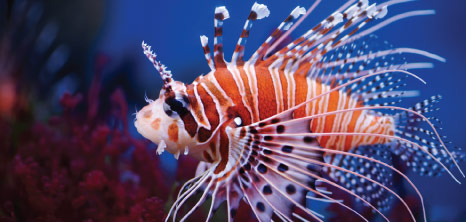|
LionfishInitially the lionfish was introduced in the Atlantic region due to its extraordinary appearances making it very sought after as aquarium fish. Nevertheless, uncertainty exists as to how this particular creature was able to find its way into the marine environment. Unfortunately, the natural predators found in the Indo-Pacific that limit the population of the lionfish are not found in the Atlantic Ocean. This causes great concern as it signals a possible rapid increase in the growth of this creature in our waters.
Recent sightings on Barbados' west coast has created quite a bit of concern as it relates to the lionfish. Beautiful in appearance but destructive by nature, this creature has found its way to the waters of Barbados. Reports indicate that one lionfish was spotted back in November, 2011 off the west coast but subsequently killed by members of the Coastal Zone Management Unit (CZMU) and the Folkestone Marine Park. In January 2012, two (2) more sightings of lionfish were reportedly seen again off the west coast. The people of Barbados have been asked to report any future sightings of this creature in an effort to inhibit its population.
In addition to the destruction that can be caused by this predator of reefs and reef fish, the lionfish also poses a threat to human health. Much attention needs to be paid to the population of this particular fish as it has the ability to eject up to fifteen thousand (15,000) eggs from one mating session. Not to mention the fact that they can mate up to three (3) times in one month.
Important to Sea BathersOf particular concern to sea bathers is the fact that lionfish can be found in both shallow and deep waters. Unless you are allergic to the venom, stings from the lionfish are not normally fatal. However, should you come in contact with its spines, medical attention should be sought right away. Until medical attention is reached, one can check carefully to ensure that there are no instances of broken spines left anyway in the wound. Warm water can be applied to the area to prevent the spread of any additional venom.
|



